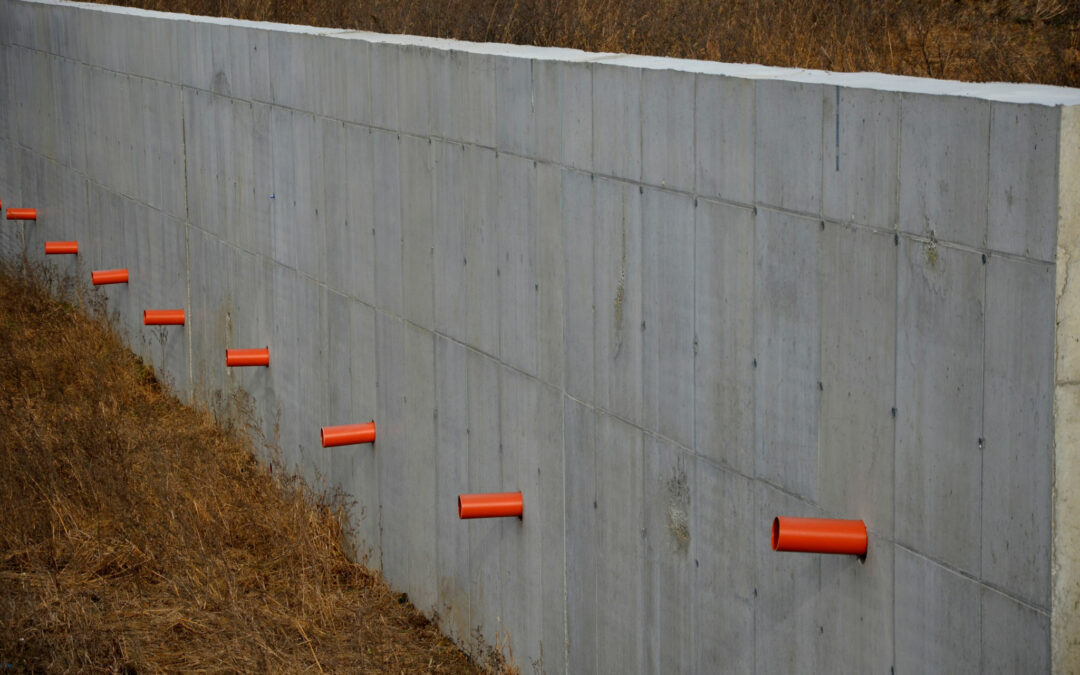The Importance of Drainage in Block Retaining Walls
In the vibrant and varied landscapes of Auckland, the construction of a retaining wall is more than just an aesthetic addition. It’s a vital structure that requires careful planning and execution, particularly when it comes to drainage. This article delves into the critical role of drainage in maintaining the integrity and longevity of block retaining walls. From understanding the impact of groundwater on different soil types to exploring the essential components of an effective drainage system, this guide is designed to provide Aucklanders with comprehensive insights into the best practices for retaining wall construction in their unique local environment. Whether you’re in the bustling suburbs of Manukau or the growing areas of Pukekohe, this information is key to ensuring a safe and durable retaining wall.
Groundwater Management:
- Groundwater is the primary concern for retaining walls.
- Without drainage, groundwater can saturate soils, causing them to swell and exert pressure on the wall.
Key Drainage Components:
- Gravel or Sand Backfill:
- Prevents water absorption and soil swelling.
- Reduces pressure on the wall.
- Perforated Drainpipe:
- Installed at the base for effective water escape.
- Ensures drainage of groundwater to safe outlets.
Soil Compaction and Wall Stability:
- Compacting soil behind the wall reduces its permeability.
- This compaction lowers hydrostatic pressure on the wall, enhancing stability.
Wall Height and Soil Type Considerations:
- Walls four feet or taller, or those backed by poor-draining soils, need a robust drainage system.
- Drainage is vital near buried water sources within 50 feet of the wall.
Drainage System Efficiency:
- Placement of outlets every 30 to 50 feet along the wall for optimal drainage.
- Regular checks and maintenance to ensure system functionality.
Professional Expertise for Local Conditions:
- In Auckland’s diverse suburbs like Manukau and Pukekohe, local knowledge is crucial.
- Professionals like Auckland Retaining Pros can tailor solutions for specific environmental conditions.
In conclusion, the success of a block retaining wall in Auckland’s diverse environment hinges on the effective management of groundwater through proper drainage. Incorporating elements like gravel or sand backfill, perforated drainpipes, and soil compaction are not just recommendations but necessities to ensure the stability and longevity of the structure. Whether facing the unique soil conditions in Manukau or adapting to the landscape in Pukekohe, understanding and applying these drainage principles is crucial. Engaging with professionals like Auckland Retaining Pros can provide the expertise and peace of mind needed for a retaining wall project that stands the test of time and nature.
FAQs on Block Retaining Wall Drainage
Why is Drainage Important for Block Retaining Walls? Drainage is crucial for block retaining walls as it prevents water from building up behind the wall, which can cause soil to swell and put pressure on the structure, potentially leading to damage or collapse.
What Materials are Best for Drainage Behind Retaining Walls? Gravel or crushed stone is ideal for drainage behind retaining walls due to its ability to allow water to flow through while providing support to the structure.
Can Drainage Reduce the Risk of Wall Failure? Yes, proper drainage significantly reduces the risk of retaining wall failure by managing the water flow and pressure exerted on the wall, thereby enhancing its stability.
How Often Should Drainage Systems be Inspected? It’s advisable to inspect drainage systems at least annually or after heavy rainfall to ensure they are clear of blockages and functioning correctly.
Are Weep Holes Necessary in Block Retaining Walls? Weep holes are essential in block retaining walls as they allow trapped water behind the wall to escape, reducing pressure and the risk of damage.
What Happens if a Retaining Wall Lacks Proper Drainage? Lack of proper drainage can lead to water build-up, increased hydrostatic pressure, soil erosion, and ultimately, the failure of the retaining wall.
How Deep Should the Gravel or Sand Layer be for Effective Drainage? A gravel or sand layer for drainage should be at least 12 inches deep behind the retaining wall for effective water management.
Is a Drainage Pipe Always Required for Retaining Walls? A drainage pipe is recommended for walls over four feet high or in areas with poor draining soils or nearby water sources to ensure effective water management.
What Type of Soil Compaction is Required Behind a Retaining Wall? Soil compaction should be done using a plate compactor or similar tool to make the soil less permeable and reduce hydrostatic pressure on the wall.
Can Improper Drainage Affect the Aesthetics of a Retaining Wall? Yes, improper drainage can lead to water stains and erosion, affecting the appearance and integrity of the retaining wall.
Does the Height of the Retaining Wall Impact Drainage Requirements? Taller retaining walls, typically over four feet, have increased drainage requirements due to the higher potential for water accumulation and pressure.
What Role Does Landscape Fabric Play in Retaining Wall Drainage? Landscape fabric helps to prevent soil from clogging the drainage materials like gravel, maintaining effective water flow away from the wall.
How Does Climate Impact Drainage Needs for Retaining Walls in Auckland? Auckland’s variable climate, with periods of heavy rainfall, necessitates robust drainage solutions to manage water effectively and protect the structure of the retaining wall.
Are There Specific Drainage Considerations for Different Types of Retaining Walls? Yes, different types of retaining walls, such as timber, concrete, or block walls, may have varying drainage needs based on their construction and materials used.
Can Drainage Affect the Lifespan of a Retaining Wall? Effective drainage is key to extending the lifespan of a retaining wall by preventing water-related damage and maintaining structural integrity.

